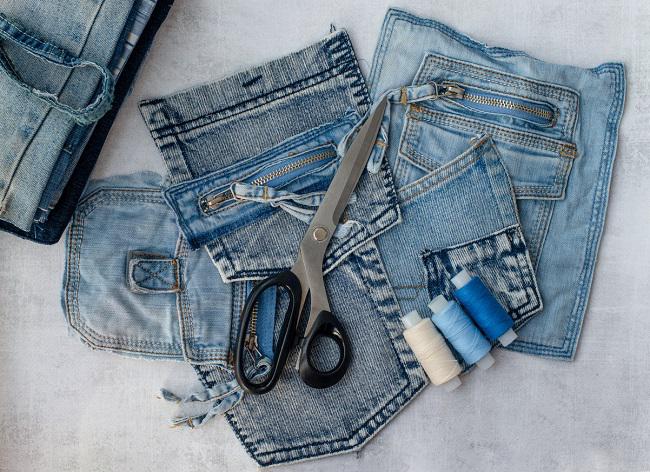Categories
How to live more sustainably for less
5 minute read

Being sustainable is often seen as the expensive option. Why is it that shopping local feels more pricey than buying groceries from the big supermarket?
We’re right there with you, especially with the current rising cost of living. The situation seems to be on most people’s minds, with reports saying that the rising cost of living is affecting 87% of British adults.
Let’s break down the true cost of living sustainably, so you can learn how to be more sustainable on a budget.
The true cost of sustainable living
There’s no arguing that some sustainable products and services are more expensive than others.
According to education platform, EcoCult, a sustainably-made t-shirt can be three times the price of a similar one made using ‘fast fashion’ practices.
Meanwhile, the cost of produce from a small, local farm shop will likely cost you way more than it would from Asda or Sainsbury’s.
Deloitte recently found that price is the second biggest thing that stops people shopping sustainably. Apparently, 31% of us believe making the switch to renewable energy sources or buying more locally is too expensive.
But that’s not to say we don’t all want to be more sustainable. In fact, 15% of people say they’re worried that their budget will force them to choose less sustainable options.
So, what’s the answer?
How to live sustainably on a budget

Presenting our stingy, but sustainable tips to help better the planet without breaking the bank:
Cut down on plastic
Avoiding single-use plastics is the most common way people demonstrate their commitment to sustainability. A huge 61% of us say we’ve cut back on plastic. This is by doing things like taking reusable bags to the shops, carrying refillable water bottles and even taking plastic containers to take our lunch away from cafes. And the best bit? Every time you say no to plastic you’re saving pennies. It might not be much, but it all adds up.
Get active
The daily commute costs more than you think, for you, and the planet. We realise cars and public transport might be the only viable option for some people. But, if possible, try to make the switch to cycling or walking instead. You won’t only be cutting back on carbon emissions, you’ll also be saving money and boosting those endorphins from daily exercise. You’ll be greener, healthier and a little bit richer. Bonus.

Outsmart the grocery stores
Buying produce that’s in season is a great way to lower your carbon footprint, while also saving money. That’s because seasonal foods are more likely to be harvested locally, meaning less time in transit and lower costs involved in getting food from the field to your plate. Nearly half (49%) of us are already shopping seasonally as a way of being sustainable.
Be a conscious consumer
The things you buy don’t always have to be brand new. It’s far more sustainable to give old clothes and products a second life than it is to buy off the rack. Plus, you’ll be saving some perfectly good products from going to landfill. There’s a ton of ways to shop second-hand, from browsing through charity shops and shopping on eBay, to using apps like Vinted and Depop to buy, sell and trade to your heart’s content. You can even recycle your old mobile with the giffgaff phone recycling scheme.
Upcycle
Harness your creativity in the most sustainable way by transforming objects, clothes and furniture into something brand new. Why not take that old bedside cabinet and paint it for a different room? Or make patches for clothes with holes in them? You could even learn to make cushion covers out of leftover fabric, or turn old jars into plant pots. The possibilities are endless.

Go plant based (at least for part of the week)
It’s no secret that going meat-free is one of the most impactful ways you can help the planet. According to an Oxford University Study, meat eaters are responsible for almost twice as many dietary greenhouse gas emissions per day as vegetarians, and about 2.5 times more than vegans. Even taking a single plant-based day a week could make a huge difference, and probably save you a pretty penny too.
Turn off the electricals
Simple, but true. Turning the lights off really does make a difference to your energy usage and your bills. You can also consider swapping old light bulbs for Light Emitting Diode (LED) bulbs or Compact Fluorescent Lamps (CFL). Yes, it’s an upfront cost. But it could knock around £100 a year from your electricity bill in the long run.
We’ve also been receiving a few tips from our lovely Community members, such as this one from jesi23:
“Never go shopping hungry! Know what you need before you shop, and try not to get distracted by things you don’t need. If you buy loose vegetables rather than pre-bagged, you can make sure they are in good condition, so you waste less, and you have less packaging to dispose of.”
Or how about this pro-tip to reduce the cost and waste of your food shopping from giffgaff member, bobrobinson:
“Take your own bags as it saves you having to buy some. Try to buy the shop’s own brands as they are a lot cheaper and most of the time just as good. I buy loose fruit so I can have a mixed bag with a couple of items each. Instead of buying big bags of fruit ,where some go to waste.The same with veg.”
Got more sustainability tips and tricks up your sleeve? Share them with the giffgaff community so we can all work together toward a greener future.





